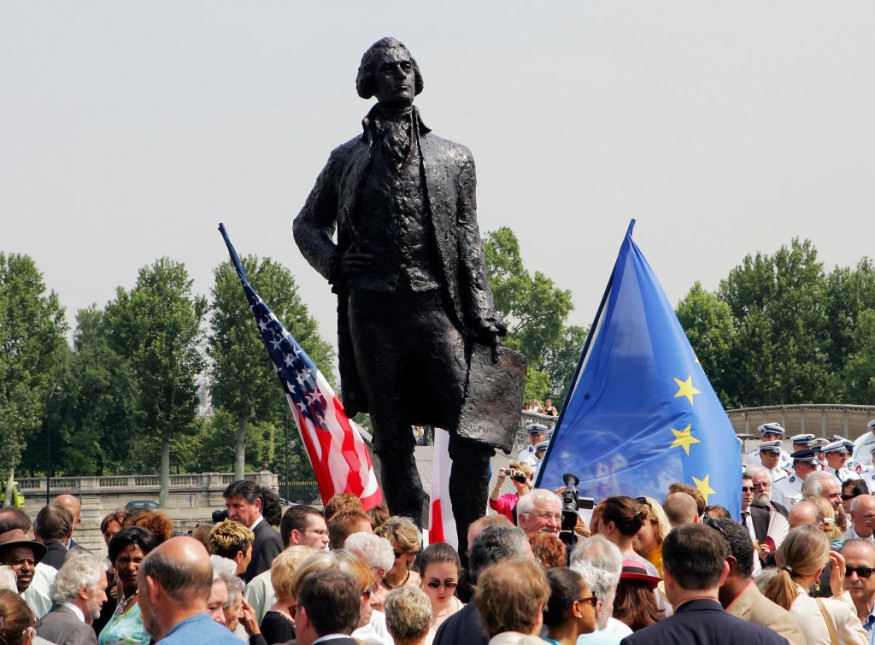New York City Hall Removes Thomas Jefferson Statue Amid Controversy on Historical Figures

The statue of the U.S.'s third president, Thomas Jefferson, has been removed from New York City Hall after 187 years.
The plastic replica of the original statue was removed from its pedestal on Monday, with its removal lasting for several hours, according to a CNN News report.
The statue was transported in a wooden crate to the New York Historical Society, where it will be loaned for a long time.
The city's Public Design Commission voted last month 8-0 in favor of relocating the statue amid controversy on the historical figure.
Jefferson has a history of being a slaveowner, owning over 600 human beings.
Thomas Jefferson Statue
The decision to remove Jefferson's statue occurred in the wake of neo-Nazi disturbances in Charlottesville, Virginia, in 2017.
The Thomas Jefferson Foundation noted in 2000 that there was a high probability that Jefferson fathered children with enslaved people at his Monticello plantation, according to The Guardian report.
Jefferson's darker side was noted in a 2012 portrait in Smithsonian magazine, wherein he was reported to describe the slave trade in the first draft of the Declaration of Independence as an "execrable commerce," and "assemblage of horrors."
A member of the New York assembly and a former council member, Charles Barron, said that the Jefferson statue should be destroyed as a statue should be done for those people can honor their exemplary service and duty to all of the United States, not just the white race.
However, a professor emeritus of art history at Stony Brook University, Michelle Bogart, said that the statue's removal "deflects attention" from the actions of controversial figures.
Bogart said that it implies that if people can remove the Jefferson statue, they can remove works from other city buildings.
Several other Jefferson statues have been removed or destroyed last year, such as those in Oregon and Georgia, according to The New York Times report.
Todd Fine, a local preservation activist, said that the decision of the commission is "hypocritical" after there have been reports that officials expressed reservations about placing the public artwork inside a private museum.
Fine said that he has a feeling that the statue will just be given away to private entities.
Historian on Thomas Jefferson
Historian David Brion Davis said that the remarkable thing about Jefferson's stand on slavery was his silence about it.
Davis noted that Jefferson was one of the first statesmen in any part of the world to call for concrete measures restricting and eradicating Negro slavery. However, Davis finds that Jefferson's emancipation efforts "virtually ceased," according to the Smithsonian Magazine profile of the former president.
Jefferson's Monticello mansion was atop a long tunnel, wherein slaves were seen carrying back and forth platters of food, linens, and tableware, among others.
Meanwhile, above the tunnel were 20 to 40 guests listening to the former president's dinner-table conversation.
Jefferson owned more than 600 slaves, with around 100 slaves living on the mountain. In 1817, the highest slave population was 140.
The slaves had several surnames such as Fossett, Hern, Colbert, Gillette, Brown, Hughes. However, they were all Hemingses by marriage or blood, descendants of the matriarch Elizabeth "Betty" Hemmings.
READ MORE : Parts of Amazon Rainforest in Brazil Are Being Illegally Offered for Sale on Facebook Marketplace
This article is owned by Latin Post.
Written by Mary Webber
WATCH: Statue Of Thomas Jefferson Removed From City Council Chamber - from CBS New York
Subscribe to Latin Post!
Sign up for our free newsletter for the Latest coverage!











